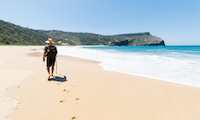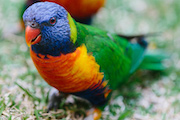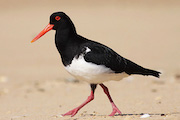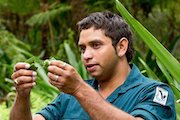Eastern quoll
Eastern quolls used to be a very common animal in southeastern Australia, but died out in the mid-20th century, primarily because of predation by introduced species, habitat loss and possibly disease.
Thankfully the species still survives in Tasmania. Since 2018 Booderee National Park has been working with partners like the World Wide Fund for Nature (WWF) to re-establish a population of eastern quolls back on the mainland.
Eastern quolls are a small sized animal of 35-45cm (head and body). They have a bushy tail 25-30cm long, a pointed snout, a slender body and are covered in white spots. They have two colour variations - soft fawn and black, which help them blend into their surroundings. Eastern quolls can be distinguished from the other three species of quoll by the presence of only four toes, rather than five, on the hind feet.
The only other quoll in the area that might be confused with an eastern quoll is the spotted-tailed quoll, it has spots on the tail, eastern quolls do not.
Eastern quolls are nocturnal and spend the day resting in dens, rock crevices or hollow tree trunks. The eastern quoll is a solitary predator, hunting at night for its prey of insects, small mammals, birds and reptiles. Although most of their diet consists of meat, they also eat some fruit and grass.
As a marsupial, eastern quolls have a pouch. They breed in early winter with a gestation period of 21 days and mum can have up to six joeys in the pouch After 8 to 10 weeks the joeys leave the pouch and stay in a den until independence starts at about five months old. The lifespan is about 3-5 years in the wild.
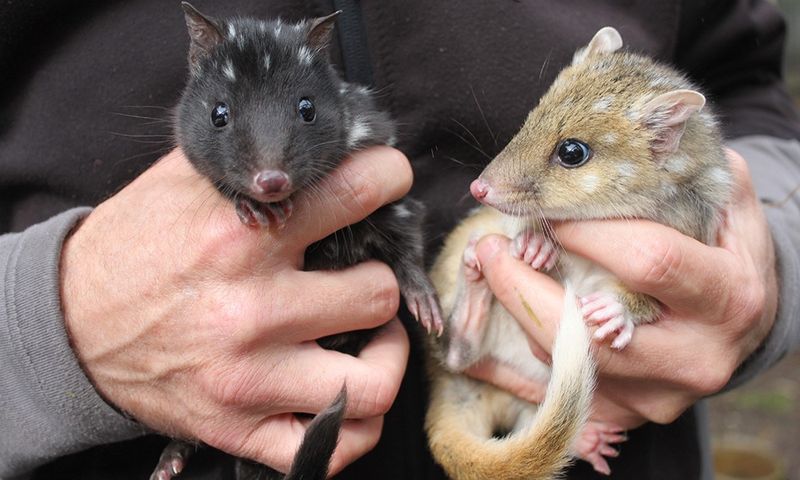
Scientific name
Dasyurus viverrinus
We say
Midhagani (Dhurga language)
Size
Length: Males 53-66 cm. Females 48-58 cm
Weight: Between 0.7-1.5 kg, with males being larger than females
Stay in touch
Subscribe to receive important updates about Booderee National Park.

